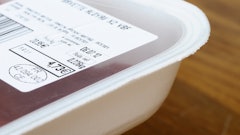Post-harvest biologists at the University of California have released an easy-to-use guide for air exchange technologies like AV+. The guide is the result of cooperation between reefer producer MCI and University of California, aimed at achieving energy savings and delivery of fruit and produce in optimal conditions.
Using a CO2 sensor, AV+ allows the produce to dictate the level of fresh air exchange based on its respiration rather than an often ambiguous fixed-vent opening that is based on the presumption of a constant fan speed. However, fixed vent openings leave many variables that can alter the actual air volume being exchanged.
The key is to provide the best possible conditions for fruit or vegetables in the cargo container from point A to B, says Malcolm Dodd, principal consultant, Cold Chain Solutions.
The post-harvest life of produce is usually spent inside a reefer container. The fruit, flowers, or vegetables are still consuming oxygen and give off carbon dioxide. Undesired gasses, e.g., ethylene, can come from engine exhausts or gensets. Thus, trucks can cause risk to the cargo, but this risk is minimized with AV+.


















